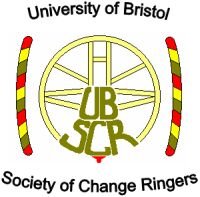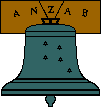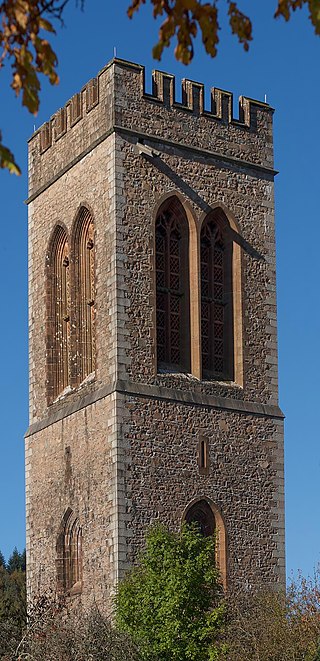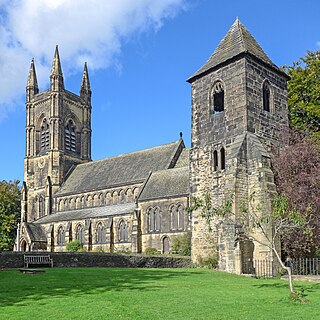
The Whitechapel Bell Foundry was a business in the London Borough of Tower Hamlets. At the time of the closure of its Whitechapel premises, it was the oldest manufacturing company in Great Britain. The bell foundry primarily made church bells and their fittings and accessories, although it also provided single tolling bells, carillon bells and handbells. The foundry was notable for being the original manufacturer of the Liberty Bell, a famous symbol of American independence, and for re-casting Big Ben, which rings from the north clock tower at the Houses of Parliament in London.
The Swan Bells are a set of 18 bells hanging in a specially built 82.5 metre copper and glass campanile in Perth, Western Australia. The tower is commonly known as The Bell Tower or the Swan Bell Tower.

St James Garlickhythe is a Church of England parish church in Vintry ward of the City of London, nicknamed "Wren's lantern" owing to its profusion of windows.

In campanology, a peal is the special name given to a specific type of performance of change ringing which meets certain exacting conditions for duration, complexity and quality.

Richard Phelps (c.1670–1738) was born in Avebury, Wiltshire, England. Phelps was a bellfounder, or a maker of bells, primarily for churches. He was master of the Whitechapel Bell Foundry in London from 1701 to 1738, and is best known for his large bell, Great Tom, in the steeple of St Paul's Cathedral in London, England. The foundry, in operation since at least 1570, was listed by the Guinness Book of Records as the oldest manufacturing company in Great Britain.

The Church of St Mary in Bruton, Somerset, England was largely built in the 14th century. Like many Somerset churches, it has a very fine tower; less usually it has a second one as well. Simon Jenkins has called Bruton's tower "Somerset architecture at its most powerful." It has been designated a Grade I listed building.

The University of Bristol Society of Change Ringers (UBSCR) is a change ringing society. UBSCR is associated with the University of Bristol and is affiliated to Bristol SU. UBSCR was established in 1943 and has rung bells at St Michael on the Mount Without since 1944. Since 1950 there have been over 700 peals rung for the society. UBSCR is also affiliated to the Central Council of Church Bell Ringers and sends two representatives to its AGM.

The Church of St Mary the Virgin, Aldermaston, is the Church of England parish church of Aldermaston in Berkshire. The church, which is dedicated to St Mary, dates from the mid-12th century and has examples of Norman and Jacobean architecture. The building has had a number of extensions, particularly in the 13th, 14th, 15th and 17th centuries.

The Thames Diamond Jubilee Pageant was a parade on 3 June 2012 of 670 boats on the Tideway of the River Thames in London as part of the celebrations of the Diamond Jubilee of Elizabeth II. The Queen, Prince Philip and other members of the Royal Family were aboard vessels that took part in the parade. The parade was organised by the Thames Diamond Jubilee Foundation, and funded by private donations and sponsorship. The pageant master was Adrian Evans.
The Guild of St Magnus is a bell ringing guild formed in 2009, following the new installation of the bells at St Magnus-the-Martyr, with the main aim of ringing for Sunday services at St Magnus the Martyr. Guild members are often also members of other guilds and societies in London and support other bands of ringers including: Southwark Cathedral; St Martin-in-the-Fields; St Michael, Cornhill and St Olave Hart Street.

St Mary's Church is the main Church of England parish church for the areas of Portsea and Fratton, both located in the city of Portsmouth, Hampshire. Standing on the oldest church site on Portsea Island, the present building, amongst the largest parish churches in the country, has been described as the "finest Victorian building in Hampshire". It is at least the third church on the site and has been designated a Grade II* listed building by Historic England. Former regular worshippers here have included Charles Dickens, Isambard Kingdom Brunel, and Cosmo Lang.

St Edmund's Church, Southwold is a Grade I listed parish church in the Church of England in Southwold, Suffolk.

The Australian and New Zealand Association of Bellringers, known as ANZAB, is the organisation responsible for the promotion of English-style "full circle ringing" – namely change ringing and method ringing in bell towers with a peal of bells – across Australia and New Zealand.

St Patrick's Church is a Church of Ireland church, located on Castle Street, Ballymena, Northern Ireland. It is the main Parish Church in Ballymena's Anglican parish of Kirkinriola and Ballyclug, and is the main civic church of the town. The current church replaced an older church dating from the early 18th century on Church Street, and was opened in 1855. The new church was destroyed by fire in December 1879, and it was restored by the original builder, keeping to the same design. It reopened in 1881.
Christopher Hodson was an English bellfounder from London, who was active between 1669 and 1696.

The All Saints Cathedral Bells are heritage-listed church bells at All Saints Anglican Cathedral, Church Street, Bathurst, Bathurst Region, New South Wales, Australia. They were built from 1853 to 1855 by John Warner and Sons, Crescent Foundry of London, England. They were added to the New South Wales State Heritage Register on 10 September 2004.

The Duke's Tower, also known as Inveraray Bell Tower, is the detached bell tower of All Saints' Church, Inveraray, Argyll and Bute, Scotland. Standing 126 feet (38 m) high on the shores of Loch Fyne, it is a landmark for miles and amongst the most notable bell towers in the United Kingdom. The tower was built as a memorial to members of the Clan Campbell who died in the First World War. It is Category A listed by Historic Environment Scotland, the highest possible rating.

The Church of St Michael and All Angels is the main Church of England parish church for the suburb of Heavitree, located in the city of Exeter, Devon. The present building is a large and imposing Gothic Revival structure dating back to the 19th century but there has been a church on the site since Saxon times. Designated as a Grade II* listed building by Historic England, the church is notable for its Victorian architecture, tall tower and proximity to the 'Heavitree Yew', an ancient common yew tree within the churchyard amongst the oldest in the county.

St Mary's Church is the parish church of the town of Mirfield in West Yorkshire, England. The current building is a large Gothic Revival structure designed by Sir George Gilbert Scott, replacing an older structure, the tower of which still survives a short distance from the present building. These structures form Mirfield's most prominent landmark and both are listed for preservation by Historic England, the old church tower as Grade II and the present building as Grade II*.
Campanology is the scientific and musical study of bells. It encompasses the technology of bells – how they are cast, tuned, and rung – as well as the history, methods, and traditions of bellringing as an art. Articles related to campanology include:


















